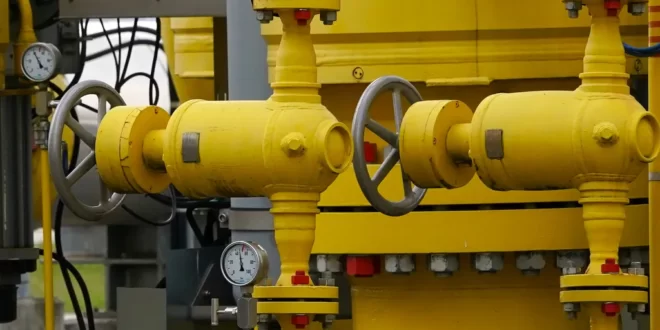European gas demand is expected to be “broadly flat” this year after falling to an all-time low in 2022 following the curtailment of Russian exports, the International Energy Agency said.
But there is a “high” level of uncertainty about Russian supply cuts and the possible economic effect of volatile energy prices, the Paris-based agency said in its latest report on the gas market.
“Last year was extraordinary for global gas markets,” said Keisuke Sadamori, the IEA’s director of energy markets and security.
“Prices are returning to manageable levels, particularly in Europe, where a mild winter and demand destruction have helped to cool markets.
“China is the great unknown in 2023. If global liquefied natural gas demand returns to pre-crisis levels, that will only intensify competition on global markets and inevitably push prices up again.”
China, the world’s second-largest economy and the biggest energy importer, has reopened its economy after nearly three years of adhering to a strict zero-Covid policy.
Lockdowns in China and the subsequent drop in demand made more natural gas available to importers in Europe.
With less gas going to China and thanks to greater storage capacities as well as an unusually warm winter Europe managed to go through the winter without a supply shortage.
Dutch Title Transfer Facility gas futures, the benchmark European contract, is currently trading below €50 ($53) a megawatt hour after surging to a record high of about €343 in August last year.
However, prices may rise again as LNG demand picks up in Asia, particularly in China, the IEA said.
The agency, which expects China’s domestic LNG demand to rise by 10 per cent this year, said that falling prices and a swift rebound in economy activity could result in LNG consumption in the country growing by as much as 35 per cent.
“This would spark fierce competition in international markets and could see prices return to the unsustainable levels seen last summer, representing a concern for European buyers in particular,” the IEA said.
European countries have signed several LNG import agreements with the US and Gulf countries over the past few months.
This month, Adnoc and German power company RWE announced the delivery of the first shipment of LNG from the UAE to Germany.
In November, QatarEnergy signed two sales and purchase agreements with ConocoPhillips to deliver up to 2 million tonnes per annum (mtpa) of LNG to Germany.
LNG global trade reached an “all-time high” of $450 billion in 2022 amid a surge in European demand as the region reduced its reliance on Russian gas imports, the IEA said.
Last year, LNG cargoes delivered to Europe increased by 63 per cent, the agency said.
Despite a rise in demand, LNG supply grew only 5.5 per cent last year, mostly due to maintenance at large export terminals and as Freeport LNG’s Texas-based plant — one of the world’s largest export centres of the super-cooled fuel — was shut down after a fire in June 2022.
“Moreover, high market prices were not enough to stimulate significant investment in new terminals,” the IEA said.
“Investment activity was slow due to rising construction costs and ongoing contract renegotiations throughout the year.”
But fast progress in some projects in North America and Qatar have left the door open to a “strong” year, the agency said.
Japan, the world’s third-largest economy, emerged as the top LNG importer in 2022, despite a 3 per cent drop in inflows, the IEA said.
Meanwhile, China’s gas consumption fell by 1 per cent on lower industrial activity and Covid-19 pandemic restrictions.
Europe’s gas demand decreased by 13 per cent on higher prices last year. The IEA said preliminary data pointed to a 4.4 per cent rise in consumption in North America.
This increase was largely due to higher electricity demand in the US and Canada, the agency said.

 Iran Energy News Oil, Gas, Petrochemical and Energy Field Specialized Channel
Iran Energy News Oil, Gas, Petrochemical and Energy Field Specialized Channel



